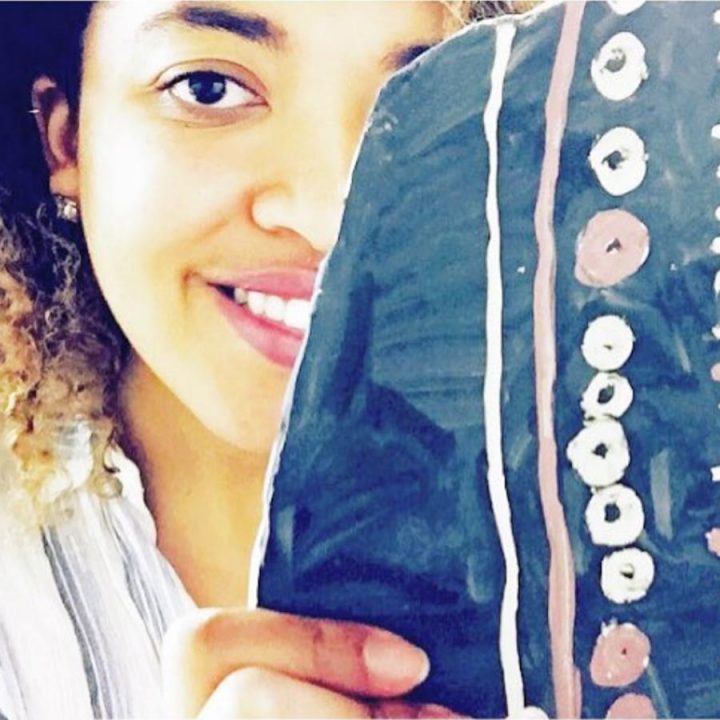In the confluence of creativity and advocacy, Marika Yeo epitomizes a distinctive pursuit that marries the realms of art and social justice through the lens of Bahá’í teachings. The question arises: How can artistic expression effectively catalyze profound societal change? This inquiry invites contemplation and challenges the preconception that art exists solely for aesthetic gratification.
At the heart of Bahá’í philosophy lies the tenet that art is not merely a repository of creativity, but rather a powerful medium for uplifting the human spirit. This belief inherently imbues art with a moral obligation—an ethos that Marika Yeo adopts in her work. Her artistic endeavors serve as a catalyst for dialogue, encouraging reflection upon the pressing social issues of our time. This juxtaposition of beauty and imperative promotes a deeper understanding of the interconnectedness of humanity.
Yeo’s exploration is punctuated by her commitment to social justice, which resonates prominently within the framework of Bahá’í teachings. The Bahá’í Faith underscores the importance of justice as a cornerstone of societal progress. It posits that every individual possesses an inherent dignity, which must be respected and preserved. Through her art, Yeo elucidates these principles, translating abstract notions of justice into visceral visual experiences that compel viewers to reconsider their perceptions of equity and fairness.
Art, in this context, becomes a medium for advocacy—a bridge linking aesthetic contemplation to social awakening. By engaging the audience emotionally and intellectually, Yeo’s work embodies the idea that art can transcend the superficial, fostering a transformative dialogue about societal inequities. This alignment with Bahá’í values not only enriches her artistic expression but serves as a moral compass guiding her endeavors.
Delving deeper into Yeo’s artistic methodology, one notable aspect is her innovative use of materials and techniques that echo her commitment to sustainability and ethical practices. In alignment with Bahá’í principles, which prioritize environmental stewardship, Yeo’s choice of materials often reflects a conscientious effort to minimize ecological impact. By eschewing conventional art supplies in favor of recycled or repurposed materials, she challenges prevailing norms and invites her audience to ponder the implications of consumerism on our planet.
Her artistic narrative often addresses themes such as identity, migration, and belonging. Each piece she creates can be interpreted as a poignant commentary on the human experience, prompting viewers to confront the realities faced by marginalized communities. For instance, in selected works that visually interpret the immigrant experience, she utilizes fragmented imagery to symbolize dislocation, yearning, and the quest for justice. Such representations not only elucidate the plight of individuals but also serve as an invitation for empathetic engagement.
Additionally, Yeo’s art frequently incorporates elements of symbolism drawn from various cultural and spiritual traditions, reflecting Bahá’í tenets of unity and the oneness of humanity. This synthesis of motifs fosters a dialogue that transcends cultural barriers, enabling viewers from diverse backgrounds to connect with the underlying messages of her work. The combination of personal narrative and universal themes creates a tapestry of understanding, beckoning viewers to reflect on their own societal roles.
Yet, in this exploration of art as a vehicle for social justice, a challenging consideration emerges: Can art alone effect substantive change? While Yeo’s body of work undoubtedly incites awareness and fosters critical discourse, the complexities of societal transformation often extend beyond the artistic realm. This poses a paradox within the discourse on social change: the artist must grapple with the reality that while art can influence thought and inspire action, it exists within a sociopolitical context that may resist change.
The Bahá’í teachings provide a broader framework for understanding this dynamic. They emphasize that individual action, complemented by collective efforts, embodies the essence of meaningful change. Hence, while Yeo’s art is intrinsic to the dialogue surrounding social justice, it is perhaps within the intersection of art and community engagement that the most profound transformations can occur. Community-based projects, workshops, and collaborative exhibitions can amplify the reach of artistic messages, fostering a sense of shared responsibility and collective agency.
Furthermore, the challenge of sustaining momentum in the pursuit of social justice cannot be overlooked. Art, while evocative, often exists in a fleeting moment—capturing attention but requiring subsequent action to catalyze real progress. Yeo’s work, therefore, serves not only as an aesthetic experience but also as a call to action, urging individuals and communities to transcend passive engagement and strive toward concerted efforts in pursuit of justice.
In conclusion, Marika Yeo’s exploration of art as a conduit for social justice exemplifies the profound synergy between creativity and the advancement of societal good, resonating deeply within Bahá’í teachings. Through her artistic vision, Yeo challenges audiences to confront multifaceted social issues while inspiring them to embrace a collective responsibility toward fostering justice and equity. The intersection of art and social action ultimately prompts a reflective inquiry: How can we, as individuals and communities, harness the power of artistic expression to effectuate enduring change in our social landscapes? The answer may lie in a commitment to engage deeply—not just with art itself, but with the transformative processes that art can ignite.
